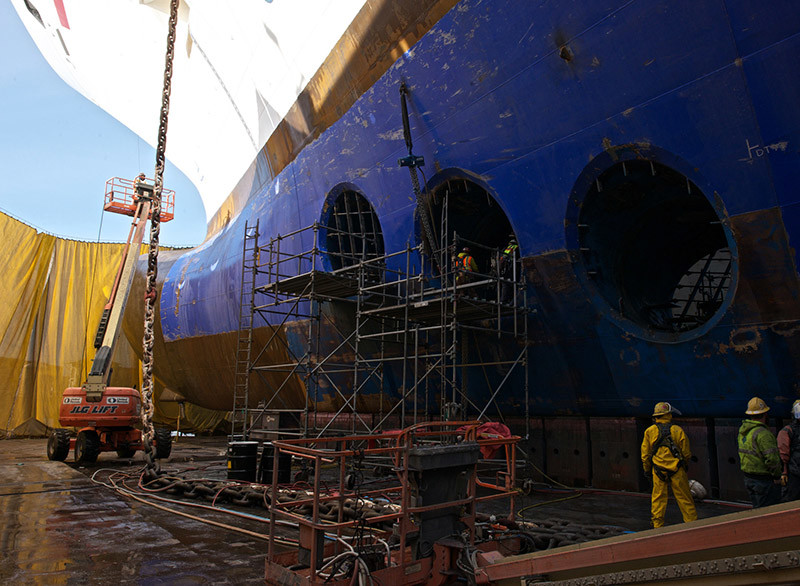A busy ship repair facility we work with recently had a follow-up visit from its USL&H (United States Longshore and Harbor Workers Compensation Act) insurance carrier.
Loss control had visited the client previously and this visit was designed to accomplish three goals: It was a chance for key players to meet in person, facility personnel to provide an update on previously noted deficiencies, and the loss control manager to view the yard during the not-so-kind New England winter.
As you know, the premium for USL&H is based on jobs performed as well as payroll. Generally, the more employees a company has the more premium the company will pay. Loss history is also a factor: The more paid claims a company incurs the higher the premium will be. It is in everyone’s best interest — from the employee staying safe to the shipyard paying the premium to the insurance company paying the claims — to keep claims to a minimum. This is where loss control comes in.
The visit made clear where safety improvements had been made and where they still needed to be made. Among the deficiencies observed were missing safety guards on machinery, chafed power cords and cluttered walkways. A key area of improvement to the yard was the installation of metal grating on gangways to the ships for better grip and to help minimize slips in the winter months.
A follow-up report was provided to the client’s safety manager with a request for written verification of completion of the safety recommendations within 45 days. An offer to provide safety trainings on site was extended. These visits can be fine-tuned to the client’s specific needs.
There is no cost for the loss control manager’s visit and they are a great opportunity to remind employees of their stake in workplace safety. Management can use safety training meetings to echo the message that safety keeps claims down, which keeps premiums down, all of which can help make the company more profitable.
A visit from a loss control manager is something to look forward to — not to regret. Input and involvement from your insurance company can help keep your premiums down. If you haven’t had a loss-control site visit recently, reach out and request one. It’s free expert advice, designed to help to improve safety and save you money in the long run. What’s not to like?




